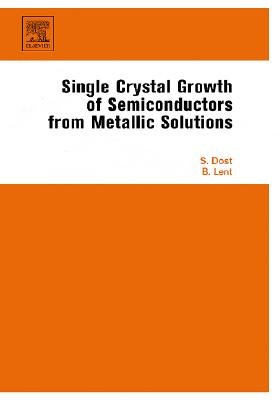
- We will send in 10–14 business days.
- Author: Sadik Dost
- Publisher: Elsevier Science
- ISBN-10: 0444522328
- ISBN-13: 9780444522320
- Format: 16.7 x 24.6 x 2.5 cm, hardcover
- Language: English
- SAVE -10% with code: EXTRA
Single Crystal Growth of Semiconductors from Metallic Solutions (e-book) (used book) | bookbook.eu
Reviews
Description
Single Crystal Growth of Semiconductors from Metallic Solutions covers the four principal growth techniques currently in use for the growth of semiconductor single crystals from metallic solutions. Providing an in-depth review of the state-of-the-art of each, both experimentally and by numerical simulations. The importance of a close interaction between the numerical and experimental aspects of the processes is also emphasized.Advances in the fields of electronics and opto-electronics are hampered by the limited number of substrate materials which can be readily produced by melt-growth techniques such as the Czochralski and Bridgman methods. This can be alleviated by the use of alternative growth techniques, and in particular, growth from metallic solutions. The principal techniques currently in use are: Liquid Phase Epitaxy; Liquid Phase Electroepitaxy; the Travelling Heater Method, and; Liquid Phase Diffusion.
Single Crystal Growth of Semiconductors from Metallic Solutions will serve as a valuable reference tool for researchers, and graduate and senior undergraduate students in the field of crystal growth. It covers most of the models developed in recent years. The detailed development of basic and constitutive equations and the associated interface and boundary conditions given for each technique will be very valuable to researchers for the development of their new models.
EXTRA 10 % discount with code: EXTRA
The promotion ends in 20d.10:05:11
The discount code is valid when purchasing from 10 €. Discounts do not stack.
- Author: Sadik Dost
- Publisher: Elsevier Science
- ISBN-10: 0444522328
- ISBN-13: 9780444522320
- Format: 16.7 x 24.6 x 2.5 cm, hardcover
- Language: English English
Advances in the fields of electronics and opto-electronics are hampered by the limited number of substrate materials which can be readily produced by melt-growth techniques such as the Czochralski and Bridgman methods. This can be alleviated by the use of alternative growth techniques, and in particular, growth from metallic solutions. The principal techniques currently in use are: Liquid Phase Epitaxy; Liquid Phase Electroepitaxy; the Travelling Heater Method, and; Liquid Phase Diffusion.
Single Crystal Growth of Semiconductors from Metallic Solutions will serve as a valuable reference tool for researchers, and graduate and senior undergraduate students in the field of crystal growth. It covers most of the models developed in recent years. The detailed development of basic and constitutive equations and the associated interface and boundary conditions given for each technique will be very valuable to researchers for the development of their new models.


Reviews